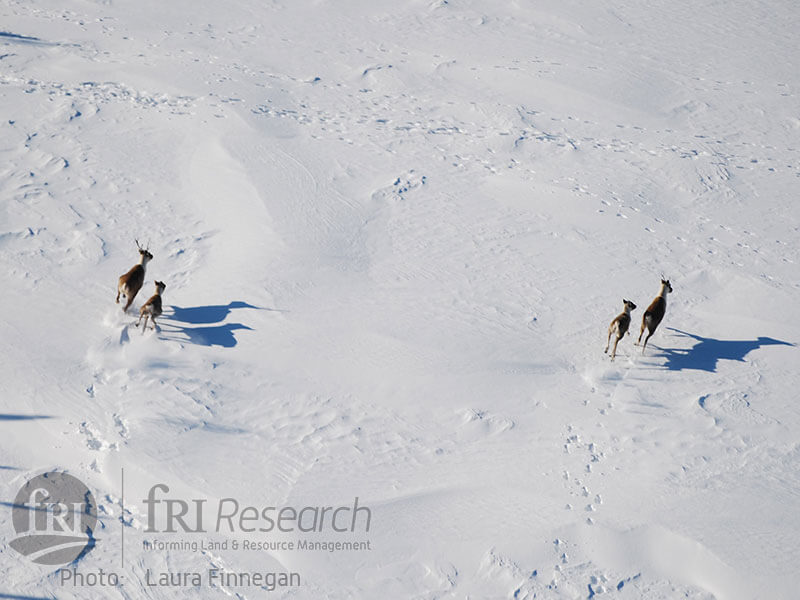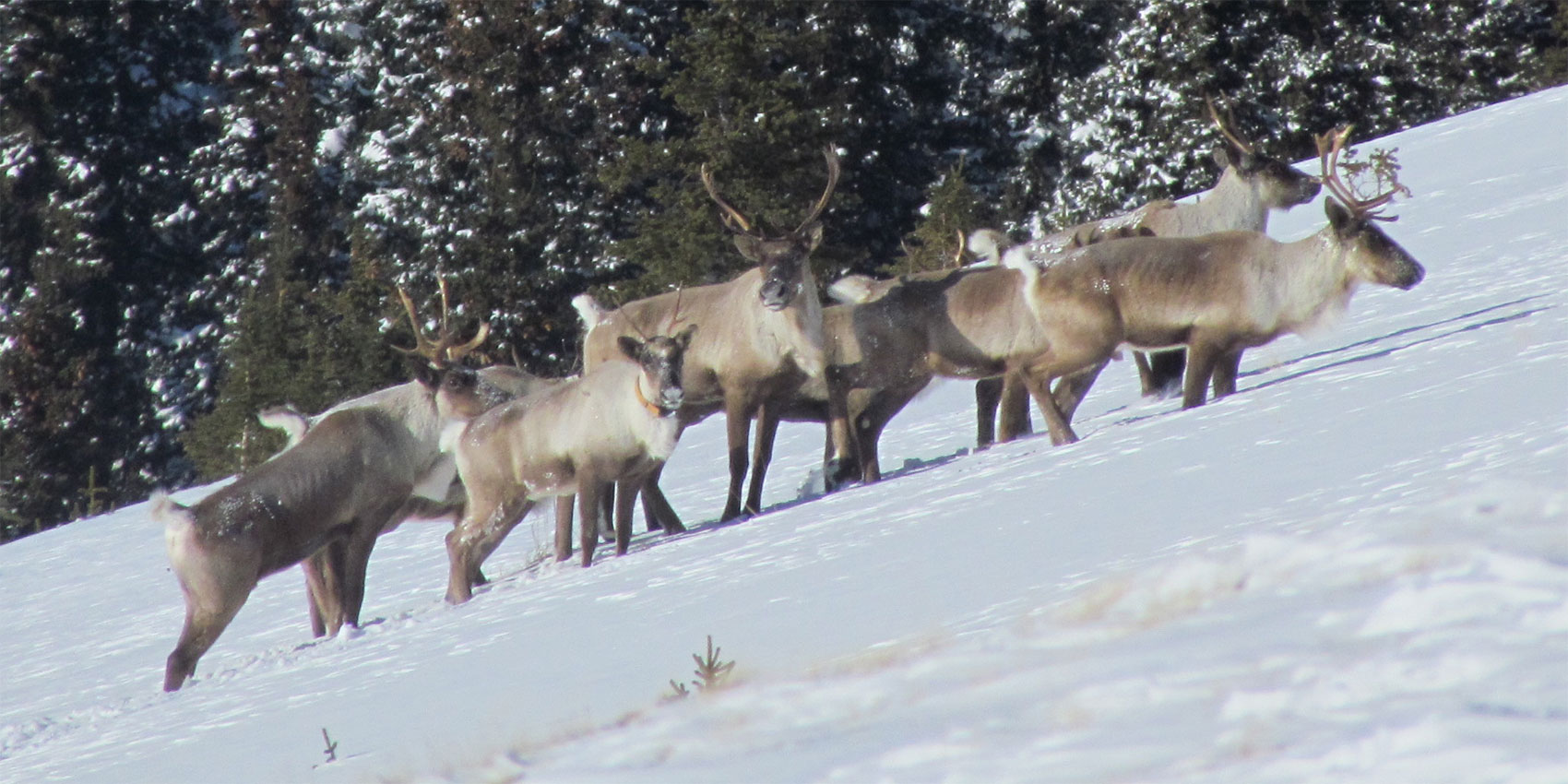
Citation:
Barry Richard Nobert, Sarah Milligan, Gordon B Stenhouse, and Laura Finnegan. “Seeking Sanctuary – the Neonatal Calving Period among Central Mountain Caribou (Rangifer tarandus caribou).” Canadian Journal of Zoology. 2016.
Abstract:
Woodland caribou (Rangifer tarandus caribou (Gmelin, 1788)) populations have declined throughout their range. With the goal of better understanding habitat selection and fidelity during the neonatal calving period (0 – 4 weeks), we applied a non-invasive method that estimates calving events and subsequent survival based on changes in movement rates among GPS-collared female caribou. We examined a long-term GPS-collar dataset (1998 – 2014) collected from 81 adult female caribou in two central mountain herds in Alberta and British Columbia, Canada. Although we were unable to validate our results with aerial surveys and pregnancy tests, our estimates of parturition rates, survival rates, calving dates and habitat selection were consistent with previous studies. We identified 83 calving sites. Female caribou selected calving sites and post-parturition habitat on high elevation ridge-tops with gradual slopes and avoided anthropogenic linear features. Female caribou displayed low fidelity to inter-annual calving ranges with an average distance of 8.7 km between calving ranges. Fidelity was lower in areas with high seismic line density. Conservation of high elevation habitat with limited anthropogenic disturbance is likely to provide the greatest benefit to central mountain caribou during the neonatal calving period, and represents a potential management strategy for population recovery efforts.
Access the full article (with subscription) here.







